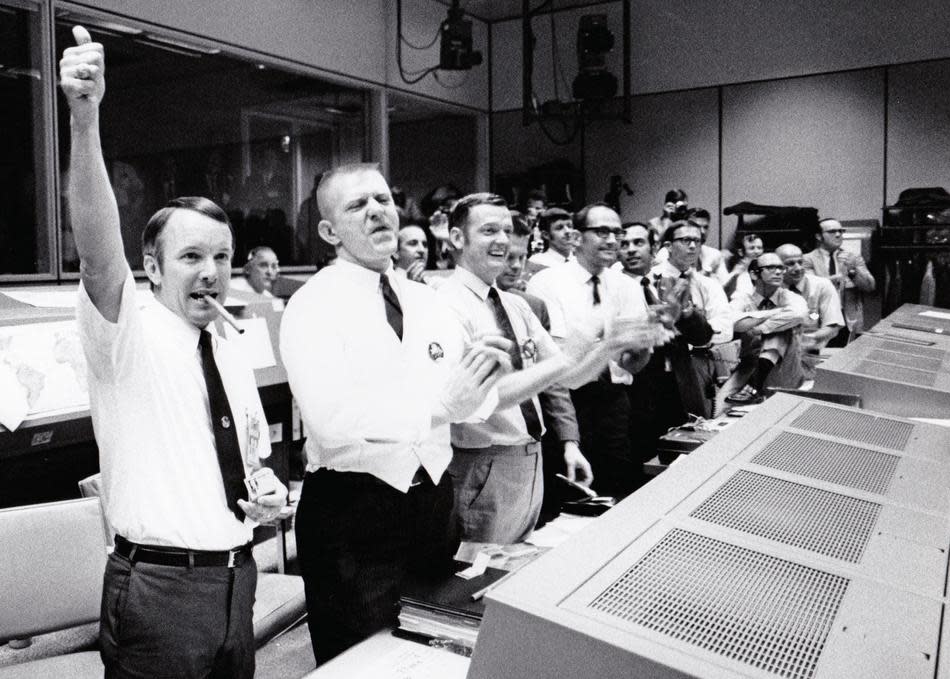Film Review: ‘Mission Control: The Unsung Heroes of Apollo’

Scheduled to blast off April 14 into theatrical and digital orbits, “Mission Control: The Unsung Heroes of Apollo” likely will be referred to by some wags as “Not-So-Hidden Figures,” given its focus on the mostly white and entirely male teams of mission controllers and support crews that were frequently visible (on TV and in newsreels) yet largely anonymous during the early days of the U.S. manned-spaceflight program. But the recent box office success of director Theodore Melfi’s compelling drama about contributions by African-American women to the space program may boost mainstream interest in this celebratory documentary, which enthralls with a more traditional but equally absorbing stories-behind-the-story narrative.
The film is a worthy follow-up by producers Keith Haviland and Gareth Dodds to “The Last Man on the Moon,” their exceptional 2014 biographical portrait of Gene Cernan, who flew three times in space and twice to the moon during his storied career as a Gemini and Apollo astronaut. Cernan — who passed away last January — figures into the list of interviewees here, as do fellow moonwalker Charlie Duke and two veterans of the Apollo 13 mission, NASA flight director Gene Kranz and astronaut James Lovell (who were memorably played by Ed Harris and Tom Hanks, respectively, in Ron Howard’s 1995 “Apollo 13”).
But director David Fairhead (who served as editor for “Last Man on the Moon”) devotes appreciably more screen time to the recollections of many lesser-known interviewees who were employed at NASA’s mission control center in Houston for the Mercury, Gemini and Apollo missions of the 1960s and ’70s. This disparate group — recruits ranging from recent college grads to seasoned military personnel at the time of their hiring — includes such engaging storytellers as Ed Fendell, who cheerfully admits he majored in drinking and skirt-chasing in college prior to signing on as an Instrumentation and Communications Officer; Steve Bales, who worked his way up from tour guide to guidance officer at the Houston space center; and flight controller John Aaron, who earned his spurs while making tough, split-second decisions during the Apollo 12 and 13 missions, but who admits that, after his grueling experiences, he could never again look to the heavens with any sense of romanticized awe. “It’s a different moon to me now,” he says.
Fairhead draws heavily on the testimonies of these and other NASA veterans — including Krantz, Lovell and Dr. Chris Kraft, the flight controller credited with inventing the concept of a mission-control center — during the documentary’s dramatic high points, which include episodes devoted to the tragedy of Apollo 1, the triumph of Apollo 11 (the first manned moon landing), and the near-disaster of Apollo 13.
The film makes a strong case for blaming the Apollo 1 fiasco (which led to the deaths of astronauts Gus Grissom, Edward White and Roger Chaffee in a cabin fire during a launch rehearsal test) on a perfect storm of rash decisions, poor design, and lax safety measures; nevertheless, some NASA vets grudging admit that the catastrophe led to improvements that probably prevented potentially greater disasters.
“Mission Control” covers ground already trod by countless earlier features and documentaries while recounting the Apollo 11 and 13 missions. Here, too, however, the film benefits greatly from its ability to review events from the viewpoints of the men on the ground in Houston. Indeed, Fairhead even manages to generate a surprising degree of suspense with behind-the-scenes details. For example: Bales nearly aborted the Apollo 11 lunar landing — twice — because of technical difficulties.
And once again, we’re reminded that, when things went wrong during Apollo 13, what Lovell actually said was, “Houston, we’ve had a problem.” Not “Houston, we have a problem.” Just like Humphrey Bogart never said, “Play it again, Sam.”
“Mission Control” also deals head-on with a defining characteristic of NASA mission controllers and support crews that, decades later, seems almost comical to contemporary viewers of archival footage: Most of these guys smoked. A lot. And when things got tense, as they most certainly did during the scramble to improvise a safe return for the Apollo 13 astronauts, the tobacco usage amped exponentially. One interviewee notes, only half-jokingly, that anytime anyone opened the door to mission control, they found themselves wading through a dense, nicotine-laced fog. Which, by the way, is not the sort of thing Walter Cronkite ever told viewers about back in the day.
Get more from Variety and Variety411: Follow us on Twitter, Facebook, Newsletter
